Labels for Safety, Visuals and Facility ID Desktop Printers
Labels for Product, Wire and Lab ID Benchtop Printers
Labels for Safety, Visuals and Facility ID Desktop Printers
Labels for Product, Wire and Lab ID Benchtop Printers
Safety and Facility ID Desktop Printers
Product, Wire and Lab ID Benchtop Printers
Barcode Scanners and RFID Readers
PaintStripe Floor Marking Stencils
Valve Lockouts & Hose Lockouts
Group Lock Boxes & Permit Control
Pipe Marker Accessories & Mounting Brackets
Maintenance and Production Tags
Calculators and Assessment Tools
Product Finders and Data Sheets
Improving efficiency, accuracy and workflow productivity are essential to industrial manufacturers and factories. That’s why so many use proven technology like automated data entry.
This article shows you why you should join the automation revolution, especially with your data collection. It highlights the growing divide between automatic and manual data entry, plus details the seriousness of errors, and their repercussions. Discover the benefits of data entry automation and you’ll never go back to manual data entry.
Data is a lifeline for businesses. But how it’s inputted can be vastly different. Two common approaches are through manual entry or by automatic capture.

This type of data input requires the keying of data by a person. It’s lengthy. It’s inexact. Data bottlenecks and human errors are often the result, which causes problems further down the line.
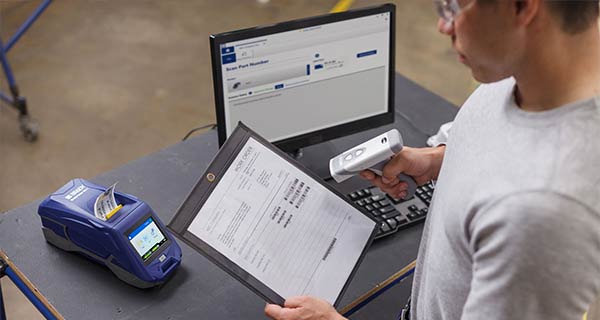
This type of data input eliminates manual steps by having the business and operating systems output the target data in machine-readable formats, like barcodes. It uses data collection tools, such as scanners on the shop floor, to read and input data. Using technology (software, digital hardware, monitoring devices) to capture data instead of manual entry minimizes errors.
Intelligent manufacturing leverages data capture technologies to digitize data entry into computer management systems. When businesses use these digital tools and phase out manual data entry, they benefit from data speed, reliability and reproducibility.
The main drawback of manual entry is that it introduces human error and increases the amount of time to acquire the data and put it into action in your business. The process is so imperfect, it occurs in three stages: entry, verification and correction of data. But errors still slip through, and if you must enter the same data multiple times, the costs of errors compound. You’ll likely see manual data entry cause:
The book "Making Quality Work" introduces the 1-10-100 rule, which asserts that the cost to correct data errors rises exponentially the longer it takes to find them, ultimately impacting efficiency, productivity and accuracy.



The 1-10-100 rule is reflected in the amount of money that low-quality data costs organizations – an average of $12.9 million per year, according to Gartner, a technical research and consulting firm.
Data automation improves data quality, minimizing the cost of low-quality data and the cost of data entry operations. Additionally, automatic data entry happens in real time, benefiting organizations with improvements in:
The strategy or model a business uses to collect data determines how fast and controlled the data capture is. This directly impacts what’s important to a business – the speed, volume and control at which the data is created. There are three ways to capture data:
An automatic identification and data capture (AIDC) system is a family of automated technologies that capture, identify, verify, transfer or store data. These systems use barcode scanners, RFID readers, sensors and other tools to collect and transfer digital data to equipment controllers and business systems. These business systems can analyze and visualize the data in real time, monitor processes and recommend business decisions.
Warehouses and manufacturers use barcode scanners or barcode readers to scan barcodes printed on inventory, assets and other materials to facilitate receiving, moving, issuing and picking. Barcode scanners may be handheld devices that are used by staff or stationary scanners that capture data as inventory passes by on a conveyor belt. Barcode software then validates and transmits the data to an inventory database in real time.
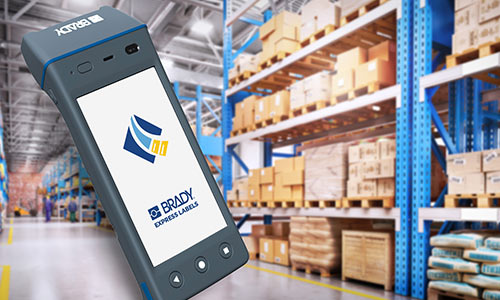
Manufacturers and industrial companies use RFID technology to identify, track and monitor assets, such as stock, technical devices, tools and even people. RFID tags can be read quickly (hundreds per second) without line of sight. They’re powered by RFID readers that energize them at a specific frequency.
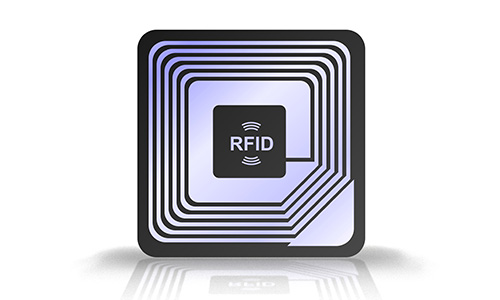
A supervisory control and data acquisition (SCADA) system and programmable logic controller (PLC) device work together to collect data from working machines and motors, monitor equipment and make event-based corrections. SCADA is the software that oversees all the monitors. PLC is the initial, local source of input data and one of the pieces of hardware that the SCADA oversees.
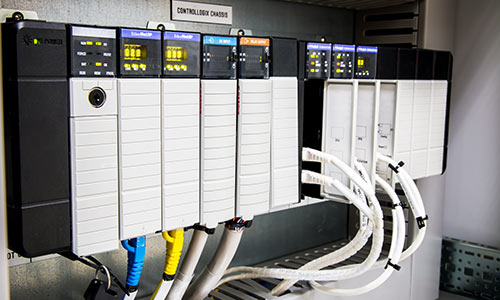
A human machine interface (HMI) is hardware or software that allows a human operator to monitor, modify or manually override processes. An HMI may be a physical control panel or software that is running on a computer.
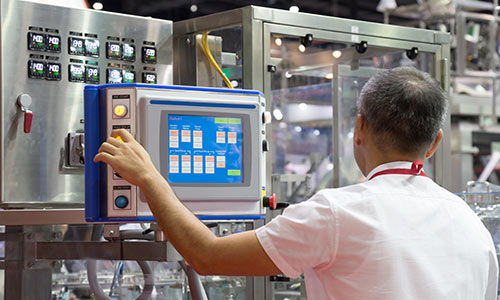
A distributed control system (DCS) supervises complex processes through a system of sensors, controllers and computers that are distributed throughout a plant and communicated with a centralized computer. The DCS collects and analyzes data in real time and adjusts, as needed. When compared to a PLC, which can make local corrections to a single working machine only, a DCS can make multiple adjustments across the plant. When compared to a SCADA, which makes event-based corrections, a DCS uses advanced control techniques to improve process efficiencies throughout the plant.
A remote terminal unit (RTU) is a device that adds an axis of movement to an articulated robot, allowing it to move up and down a production line. The data that an RTU collects is made available to PLCs and/or HMI, enabling operators to monitor and control robotic assets.
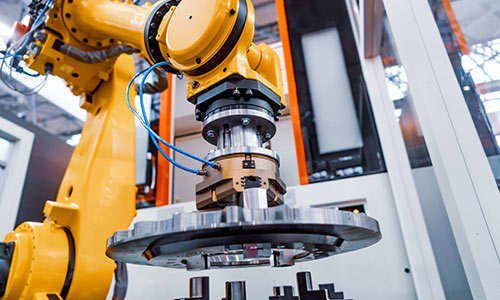
Material requirements planning (MRP) is a stand-alone system that collects data from inventory, the bill of materials and the production schedule to calculate inventory requirements and schedule fabrication or purchase of needed supplies.
An enterprise resource planning (ERP) system is a comprehensive software platform that integrates with other business systems to manage day-to-day business operations, such as manufacturing processes, accounting, purchasing, human resources, etc. An ERP may have MRP capabilities, or the two systems may be integrated.
Manufacturing execution systems (MES) track and record the transformation of raw materials to finished goods on the shop floor, enabling manufacturers to monitor and control the process, work-in-progress inventory and ready-to-ship inventory in real time. An MES may be integrated into an MRP and/or ERP system.



Because a large volume of complex data can be input, sorted, analyzed and shared in real time, data automation facilitates big data and big data analytics, which help businesses to make prompt, informed decisions.
According to McKinsey & Company: “There has been a more than ten-fold increase in data in the last decade and more than a 50 percent increase [in data] in 2020 alone. This brings the current data estimate to a massive 64 zettabytes; a number that continues to grow each day.”
are extremely large and complex volumes of data that arrive at great speed, often from new sources. This explanation is better understood as the “three Vs” of big data, which are:
describes the process of examining big data to identify patterns, trends, associations and preferences. The process uses AI technologies, which allow businesses to collect and analyze big data in real time to make instantaneous, knowledgeable decisions about:
Intelligent manufacturing leverages AI and IoT tools to digitize data entry into computer management systems. These digital tools replace manual data entry, and offer the additional benefits of speed, reliability and reproducibility.
Every business needs a starting point – a place from which everything else flows. For manufacturers and industrial businesses, that starting point is their data input processes that facilitate more efficient, reliable and effective operations.
Begin your data automation journey today with Brady Corporation’s industrial barcode label printers, innovative data capture tools, barcode scanners, RFID readers, labels and tags. Fully automate your label printing process with Brady Workstation Automation Software Suite, a group of apps that facilitates error-free label making.
Always at the forefront of innovation, Brady Corporation anticipates and exceeds our clients’ needs through our unique combination of capabilities, expertise and talent, providing unrivaled solutions whenever and wherever needed.
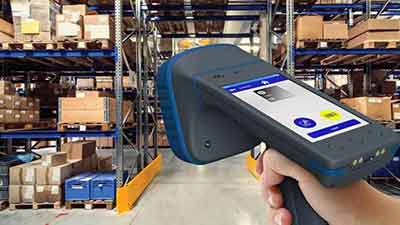
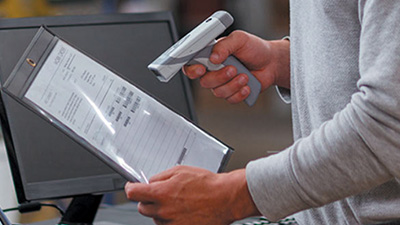
Gain immediate insights into your production systems and shift productivity into overdrive.
Analyze real-time data across your operations to make well-informed decisions in no time.
Implement world-class identification technologies with the world’s most trusted manufacturing leader.
Let’s have a conversation to discuss what a flexible manufacturing environment can do for you.